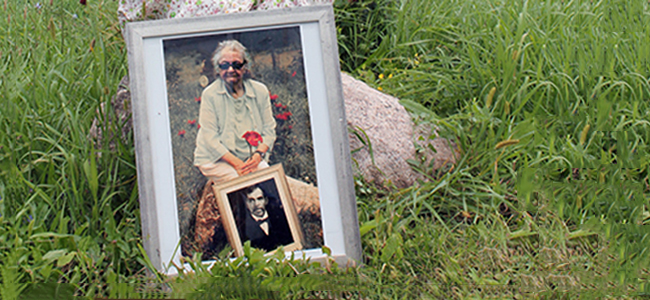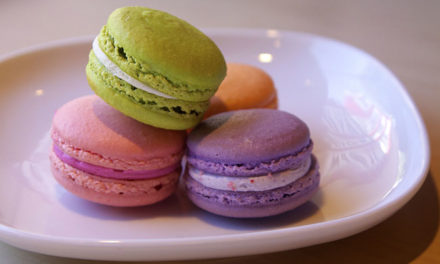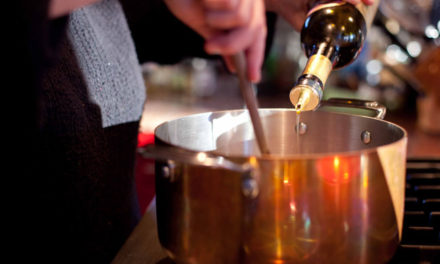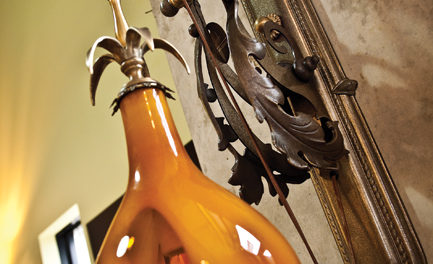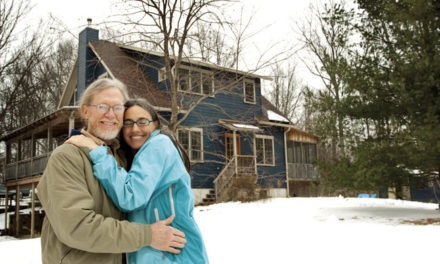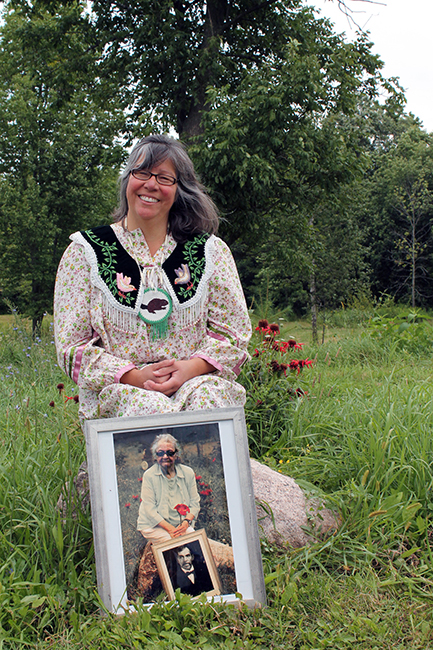
Patti Fischer, a descendant of Jefferson Chew, with a photo of her mother, holding a photo of Chew. Photo by Joe Stahlman
BY PETER DORFMAN
When Joe Stahlman began exploring the photographic archives of the Mathers Museum of World Cultures, it was through an anthropologist’s intellectual lens. He wasn’t expecting his search to bring him face to face with Jefferson Chew — his great-great grandfather.
It wasn’t a complete surprise that Stahlman would find an ancestor among the 8,004 images in the Wanamaker Collection of American Indian photographs, one of the museum’s prized photographic assets. Stahlman belongs to the Tuscarora, the smallest of the six Iroquois Nations. Most can trace their lineage to a few common ancestors.
But finding Jefferson Chew and five other Tuscarora elders in the collection was a happy accident. It spawned a multiyear project to reintroduce these long-deceased individuals to their modern descendants. That project is documented in a photo essay on display at the Mathers Museum — “Stirring the Pot: Bringing the Wanamakers Home.”
The photos were taken between 1908 and 1913 by photographer Joseph K. Dixon on three trips to reservations across the United States. The trips were funded by Rodman Wanamaker of the Philadelphia department store family. Mathers curator Ellen Sieber gave prints of the six 1913 Tuscarora images to Stahlman and his wife, fellow anthropologist Fileve Palmer-Stahlman.
Their idea was to repatriate the photos to descendants among the Tuscarora who live in western New York, near Niagara Falls. They sent electronic copies to members of the community of about 1,200, who started sharing them. More recently, the two took framed prints of the images to Tuscarora homes and invited people to pose with their ancestors for new photos.
Uncharacteristic of most other subjects in the Wanamaker collection, the Tuscarora Indians are posed as they chose, in clothing of ordinary 1913 Americans. “Dixon brought costumes and props with him and had his subjects pose doing ‘Indian’ things,” Stahlman says. “But these six pictures are different. These are people as they really were.”
The two Bloomington anthropologists adopted the same approach, documenting modern Tuscarora people interacting with the photos. One of the most resonant images is of Patti Fischer, another descendant of Jefferson Chew, depicted in Tuscarora dress holding a photo of her mother, who in turn is holding Chew’s portrait.
Stahlman says they are applying for grants to expand the project in order to repatriate other Wanamaker photos to Indian descendants across the country. “Dixon’s pictures are well-documented — we know who these people are,” Stahlman explains. “We’re able to bring them back and talk about them in ways that bring new life to them.”
The exhibit will eventually reside at the Tuscarora Nation House in Lewiston, New York. View the exhibit at the Mathers Museum, 416 N. Indiana Ave., until May 27. For more information, visit indiana.edu/~mathers.


